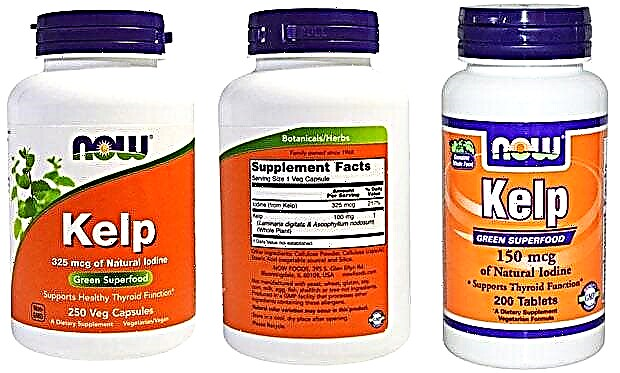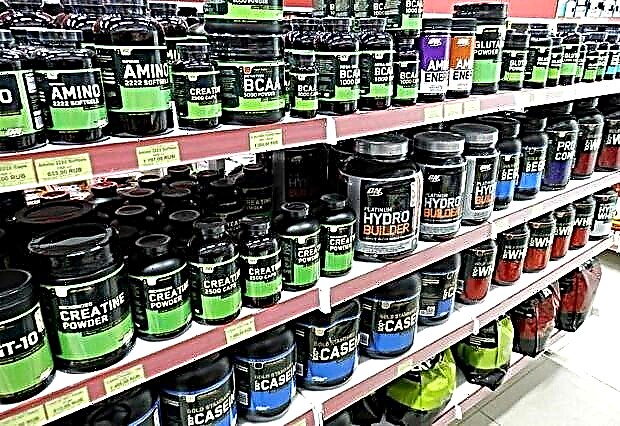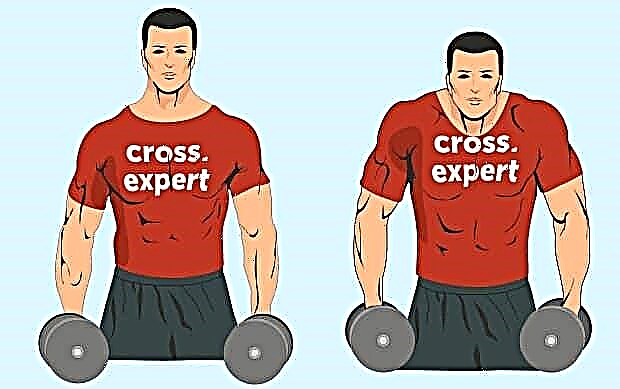Diuretics are compounds of various chemical structures that, when ingested, contribute to the elimination of fluid. Depending on the pharmacological group, the diuretic effect is due to several mechanisms of action.
Diuretics are most common in the treatment of diseases of the cardiovascular system, kidneys and other organs. In addition, they are used by athletes to quickly remove fluid and give the body relief.
What are diuretics for?
Diuretic drugs are used by athletes to remove fluid from the body. The effect allows you to reduce the total blood volume in the vessels. This effect is used to lower blood pressure in people with hypertension. In chronic heart failure, there is a weakening of the pumping function of the heart and stagnation in the small and large circle of blood circulation. The clinical picture is represented by edema of the lower extremities and face, the appearance of shortness of breath and moist wheezing, which are determined by auscultation of the lungs. Taking diuretics allows you to remove excess fluid and relieve symptoms of CHF.

Osmotic and loop diuretics are used in resuscitation to treat and prevent pulmonary and cerebral edema.
Also, diuretics are prescribed as a detoxification treatment for poisoning with salts of heavy metals, drugs, narcotic substances and other toxins. They are prescribed in the case of the development of decompensated cirrhosis, which is characterized by portal hypertension. The drugs eliminate or reduce the intensity of edema, remove fluid from the abdominal cavity with moderate ascites.
It is important to take diuretics for eclampsia, a pathological condition that develops in women during pregnancy or childbirth. The disease manifests itself as a critical increase in blood pressure, which leads to convulsive syndrome and disruption of the brain against the background of edema. Complex treatment, in addition to prescribing diuretics, mainly osmotic, includes artificial ventilation, blood pressure monitoring, relief of hypertension using magnesium sulfate infusion therapy, and resuscitation measures.
An increase in intraocular pressure (glaucoma) is an indication for the use of carbonic anhydrase inhibitors. The enzyme is produced in many tissues, including the ciliary body. Topical application of a diuretic in the form of drops relieves the manifestations of glaucoma.
Varicose veins are accompanied by the development of edema, therefore, an increase in urine output through the use of drugs relieves the symptoms of the disease and prevents the occurrence of complications.
Why do athletes need diuretics?
Diuretics are widely used in athletes and bodybuilders. The use of diuretics leads to the excretion of fluid, which is contained not only in the bloodstream and tissues, but also in the subcutaneous fatty tissue. As a result of this effect, the body externally acquires relief.
Diet therapy, which involves a limited intake of salt and water, shows results over a longer period, while drugs almost instantly allow you to achieve the desired result. This is especially true on the eve of the competition.
Taking drugs can be parenteral, that is, through the introduction of a syringe into a vein. This application provides a faster effect. However, this method can cause a sharp drop in blood pressure, impaired brain function and other complications. Professional athletes prefer diuretic tablets, since such administration of the drug ensures uniform absorption of the active substance and a softer effect.
Many professional athletes are susceptible to metabolic diseases caused by the accumulation of urea, ketone bodies, uric acid; therefore, the use of diuretics is a method of preventing such pathologies.
Classification and mechanism of action of diuretics
The classification of diuretics is based on the characteristics of the drugs.
Diuretics that promote fluid excretion against the background of impaired ion reabsorption:

Loopback
Loop diuretics are most effective. The point of application of the drugs is the thick segment of the ascending part of the loop of Henle. They reduce the reabsorption of sodium, potassium and chlorine by blocking the transport systems. Along with the listed electrolytes, the funds remove calcium and magnesium in insignificant concentrations, however, course therapy can lead to hypomagnesemia. Long-term use leads to an improvement in renal blood circulation, therefore they are used with insufficient function of the glomerular apparatus.
Among the drugs in this group: Furosemide, Lasix, Bumex, Ethacrynic acid, Torasemide.
Thiazide
Thiazide derivatives affect the metabolic processes of ions in the initial part of the convoluted tubules of the nephron. The drugs block specific proteins that ensure the reabsorption of sodium and chlorine. This effect leads to an increase in the excretion of water and electrolytes from the body. Also, thiazide diuretics moderately block carbonic anhydrase, which enhances the diuretic effect.
Drugs in this group: Naklex, Dichlorothiazide.
Potassium-sparing
Potassium-sparing drugs act on the terminal section of the distal tubules, as well as the collecting ducts. Despite the weak effect, diuretics of this pharmacological group are widely used in medicine due to their special mechanism of action. The drugs increase the excretion of sodium, but at the same time retain potassium and magnesium, which avoids a deficiency of electrolytes in the blood, and, consequently, heart disorders.
This list includes Spironolactone, Veroshpiron, Triamteren.
May or may not be aldosterone antagonists. The first include Spironolactone, Veroshpiron. This means that its therapeutic activity is the higher, the higher the level and production in the body of aldosterone (the hormone mineralocorticosteroid produced by the adrenal cortex). This substance promotes sodium reabsorption. The drugs of this group competitively inhibit the hormone, displacing it from the connection with receptor proteins. Aldosterone antagonists reduce the reabsorption of sodium ions, thereby increasing the excretion of fluid from the body.

Osmotic
They act in the lumen of the nephron tubules. Medication creates high hydrostatic pressure so that water is not absorbed back into the bloodstream and excreted from the body. In addition, the drugs contribute to the dehydration of tissues, including those protected by the histohematogenous barrier. This feature is used to eliminate pulmonary and cerebral edema.
Among the drugs in this group, Mannit is worth highlighting.
Carbonic anhydrase inhibitors
They lead to a violation of the reverse absorption of bicarbonate, as a result of which the release of sodium ions and water increases.
This group includes Diakarb, Fonurit.

Mercury
Diuresis is increased by inactivating sodium transport systems. A decrease in ion reabsorption leads to an increased excretion of water with the kidneys. There is a theory that drugs of this pharmacological group also affect the nervous structures of the kidneys. The medicine is prescribed in case of ineffectiveness of other means, since mercury diuretics are highly toxic.
Among such medicines are Novurit, Merkuzal.
The appointment of certain diuretics depends on the underlying disease. In some cases, a combination of several means is used to achieve a more pronounced effect.
In sports, athletes most often use loop and thiazide drugs, as they quickly show a diuretic effect. Potassium-sparing agents are also common - their use less often leads to electrolyte disturbances.
Top best diuretics in 2018
Furosemide is the most effective among loop diuretics. The drug is characterized by a fast short-term action. In the medical field, the drug is used as an ambulance to eliminate severe edema, severe symptoms of chronic heart failure and edema of the brain and lungs.
The most pronounced effect in the group of potassium-sparing diuretics is possessed by the aldosterone antagonist Veroshpiron. The drug avoids pathological conditions caused by electrolyte deficiency, but the visible effect is achieved more slowly than when using loop diuretics. In second place, you can put Amiloride.
The leader among thiazide diuretics is Hydrochlorothiazide. The tool effectively removes fluid from the body by inhibiting the reabsorption of electrolytes. The drug has a moderately pronounced effect and long-term effect.
Folk diuretics
Some traditional medicines have a diuretic effect.
- To remove excess fluid from the body, decoctions of birch leaves are used. To prepare the medicine, 300 ml of boiling water is poured over one teaspoon of the dried plant and infused for 30 minutes. Take 100 ml of the product a day for a week.
- A diuretic effect is shown by a tincture prepared on the basis of bearberry, as well as lingonberry and grape leaves.
- Green tea increases urine output. You can add mint, birch, currant or grape leaves to the drink to enhance the effect.
- Some folk remedies can be purchased at the pharmacy, for example, Kanefron, which contains herbal ingredients - centaury, rosemary and lovage.

Indications
Taking diuretics is indicated for:
- arterial hypertension;
- edema;
- glaucoma as therapy or preparation for ophthalmic surgery;
- preeclampsia and eclampsia for the relief of high blood pressure;
- chronic kidney disease.
Contraindications
Taking diuretics is contraindicated in the case of:
- severe renal failure, accompanied by anuria;
- obstruction of the outflow of urine of any etiology;
- an increase in pressure in the jugular vein of more than 10 mm Hg;
- hypertrophic cardiomyopathy;
- electrolyte disturbances;
- dehydration against the background of vomiting, diarrhea and other pathologies.
It is not recommended to increase diuresis in acute myocardial infarction, cerebral artery stenosis, diabetes mellitus without therapy, and autoimmune diseases.
During pregnancy, diuretics from the thiazide group are prescribed, but at the beginning other pharmacological groups are used. Numerous clinical studies have shown that with a decrease in the volume of circulating blood against the background of the use of diuretics, the risk of developing late gestosis increases.
Side effects
The most common side effect is the development of hypokalemia when taking thiazide and loop diuretics. This electrolyte imbalance leads to arrhythmias. Furosemide and its analogs exhibit an ototoxic effect, that is, they reduce hearing. This occurs as a result of impaired perception of sound stimuli in the inner ear as a result of changes in electrolyte balance. When the drug is canceled, the auditory function is restored. Thiazide diuretics increase the risk of glaucoma or transient myopia.
Osmotic drugs can lead to severe dehydration, which is manifested by dry skin, thirst, impaired consciousness, and a decrease in blood pressure with severe dehydration. It is also possible to develop electrolyte deficiency, chest pain in the form of angina pectoris.
In response to taking diuretic drugs, an allergic reaction may develop.
Regular use of drugs from the group of aldosterone antagonists causes the formation of gynecomastia and erectile dysfunction in men, infertility and disorders of the ovarian cycle in women.
To avoid complications, you must carefully read the instructions for use of the medicine. Overdose threatens with serious consequences from the internal organs.
Slimming diuretics
The use of diuretics for weight loss is a common misconception that often leads to serious consequences. The mechanism of action of diuretics is the removal of water from the body, therefore, when they are taken, body weight decreases due to an increase in diuresis.
Indapamide is capable of increasing the secretion of specific prostaglandins, which leads to a decrease in the concentration of low-density lipoproteins in the blood, that is, cholesterol, which causes the formation of atherosclerotic plaques. But this effect has nothing to do with weight loss, contrary to popular belief.
This means that the use of diuretics does not lead to the desired results, since weight loss occurs only due to the excretion of fluid. Regular intake of diuretics for no apparent reason increases the risk of developing unwanted effects.
Types of diuretics for athletes
Loop diuretics are intense. Their pharmacokinetics is characterized by rapid intestinal absorption. The maximum effect is achieved in half an hour and is characterized by an increase in urine output and rapid loss of body weight. The group of thiazide diuretics is absorbed a little longer, the effect is milder than that of loop drugs. This pharmacological group is preferred for use among athletes due to the smaller spectrum of side effects.
- In bodybuilding, the use of Furosemide provides a rapid excretion of fluid from the subcutaneous fatty tissue, which leads to external changes - the body becomes more prominent. It is recommended to use the medicine in tablet form to avoid complications. The effect is achieved within 30 minutes after oral administration of the drug, the duration of action varies from 90 minutes to three hours. Bumetanide has a longer action. As a rule, it is used when Furosemide is ineffective.
- The herbal remedy Canephron, which includes centaury, rosemary and lovage, is suitable for course use, as it causes a mild diuretic effect.
Recently, special supplements for athletes are gaining popularity, containing a diuretic, vitamins and electrolytes. These include:
- Hydrazide from MuscleTech
- Xpel from MHP;
- Showtime by SciVation.

Hydrazide by MuscleTech
The combination of sports nutrition with diuretics in a short time gives the athlete body relief.
A way to hide anabolic steroid intake
It is believed that the excretion of fluid from the body is able to remove the metabolites formed during the breakdown of anabolic steroids. This statement is a myth, since most of the doping is deposited in the tissues and cannot be excreted with water.
The use of masking agents is popular among athletes:
- Probenecid is an agent that enhances the excretion of uric acid. Used to treat gout.However, in sports it is prohibited by the anti-doping system, since the agent promotes the elimination of steroids from the body.
- Epitestosterone is an intermediate that is formed during testosterone metabolism. The use of compound-based drugs interferes with the detection of anabolic steroid intake.
To hide the fact of doping, athletes use polycyclic compounds - some antibiotics, immunotropic drugs based on bromantane.









